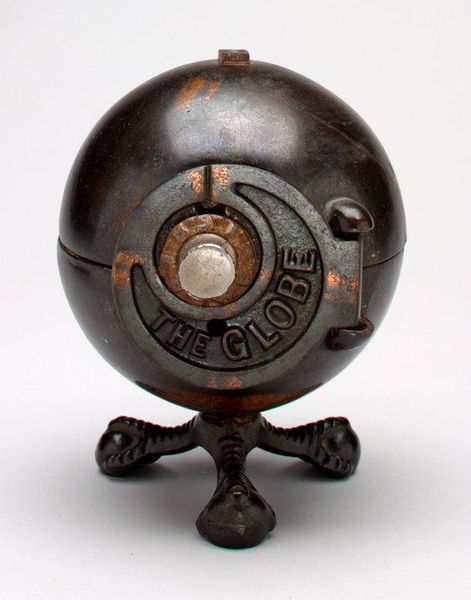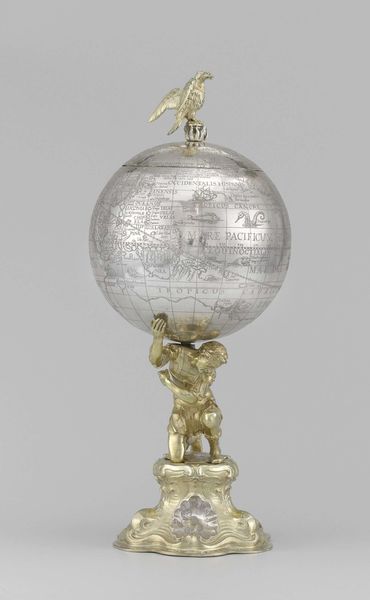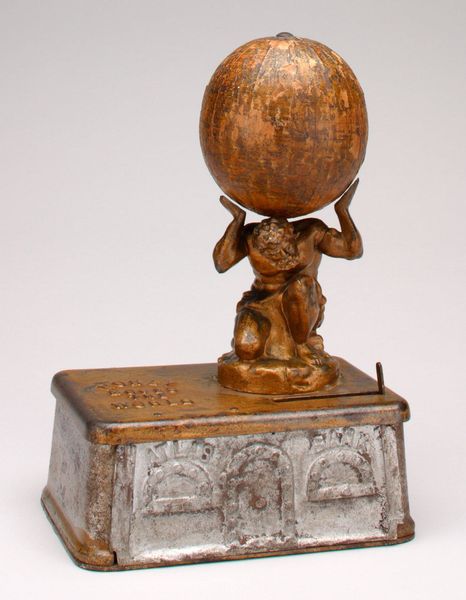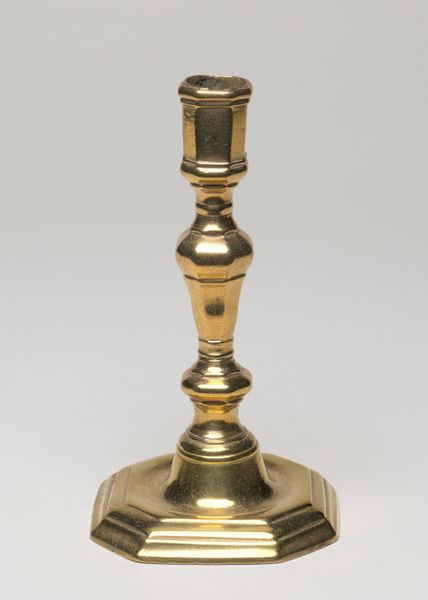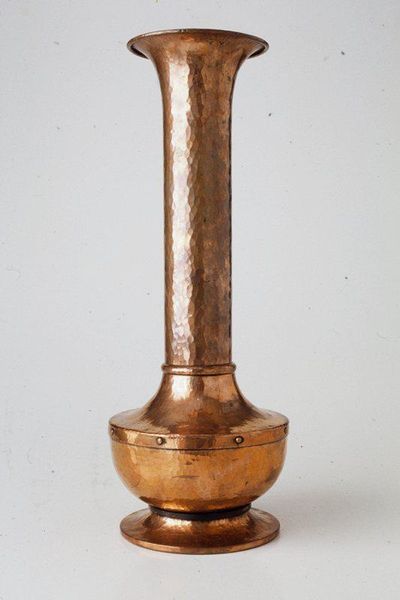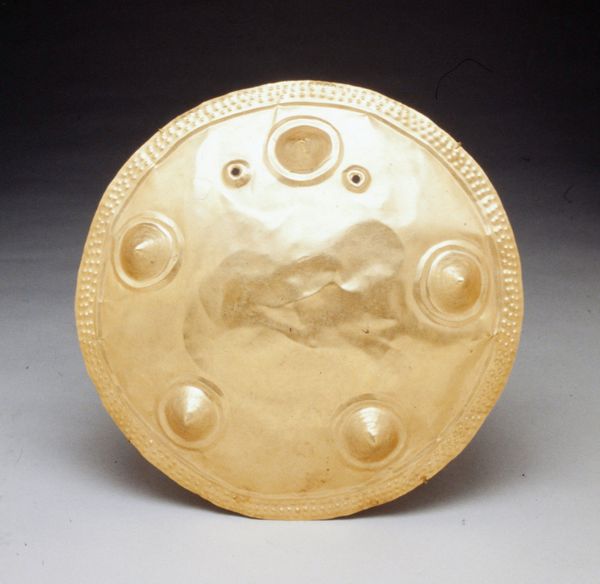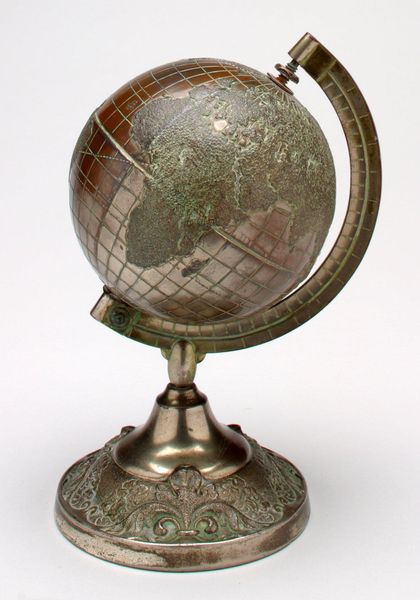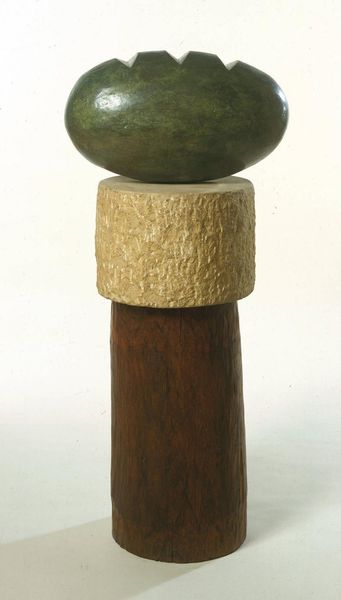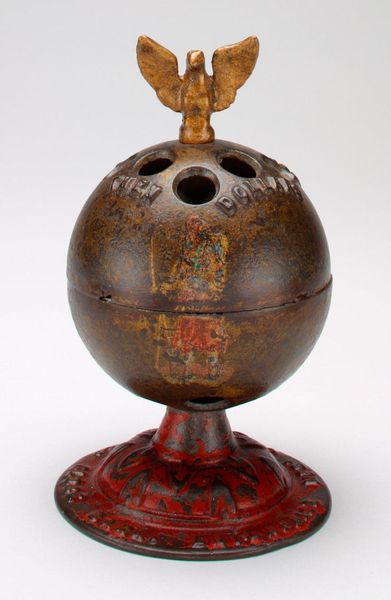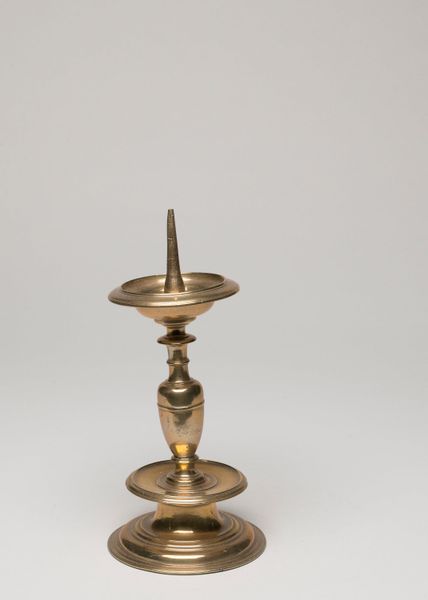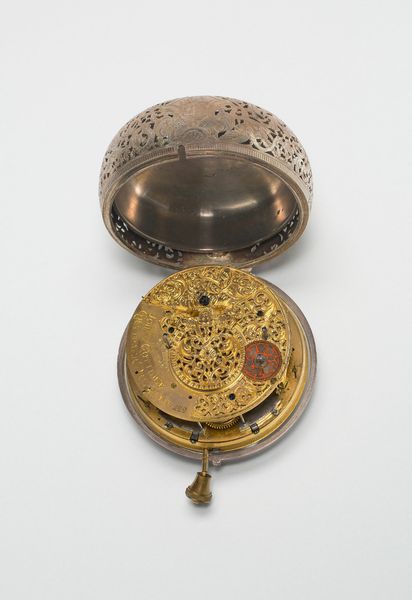
assemblage, bronze, sculpture
#
contemporary
#
conceptual-art
#
assemblage
#
bronze
#
geometric
#
sculpture
#
pop-art
Dimensions: 4 1/2 x 3 1/4 x 3 1/4 in. (11.43 x 8.26 x 8.26 cm)
Copyright: No Known Copyright
Curator: Before us stands John Wright’s -Apollo, an assemblage from approximately 1970, now residing here at the Minneapolis Institute of Art. Editor: My first impression is... unexpectedly nostalgic. It looks like a childhood piggy bank dipped in gold, with a rocket haphazardly stuck on top. It has a very handmade, almost folksy feel to it, despite the futuristic subject. Curator: The choice of bronze and the use of assemblage speak to Wright’s interest in transforming everyday objects into artifacts imbued with historical significance, positioning the Apollo missions within the realm of myth and national pride. Editor: Exactly! It's a critical yet celebratory take on American exceptionalism. The pop-art sensibility acknowledges the media spectacle surrounding the space race, while the almost crude construction hints at the potential for empty spectacle and unfulfilled promises, particularly for marginalized communities here on Earth. Curator: It's interesting how the seemingly celebratory depiction invites critique. The rough texture contrasts sharply with the polished, utopian image often associated with space exploration during that period. Think of the ways NASA presented itself to the American public! Wright’s piece challenges that polished façade. Editor: And it highlights the politics inherent in seemingly apolitical events. The "USA" inscription is impossible to miss, subtly reminding us of the Cold War context, where the space race was as much about asserting dominance as it was about scientific advancement. It raises questions about whose dreams are being funded and whose realities are being ignored. Curator: Furthermore, the diminutive scale and its almost kitsch aesthetic contribute to a reconsideration of public sculpture and its role. Wright transforms a historical moment into a consumable object, questioning its permanence and institutional veneration. Editor: I find the work quite relevant to contemporary conversations. With today’s tech billionaires vying for their own private space endeavors, Wright’s critique of spectacle and the problematic allocation of resources feels strikingly prescient. Curator: Indeed, Wright prompts us to question the narratives we construct around technological progress and national identity. Editor: It’s a potent reminder that history and context matter, especially when we consider monuments to our collective aspirations. Curator: A valuable piece for exploring these connections between historical context, cultural production, and social commentary. Editor: Definitely sparks interesting discussions. It will keep me pondering the golden glow of nostalgia and what lies beneath it.
Comments
No comments
Be the first to comment and join the conversation on the ultimate creative platform.
